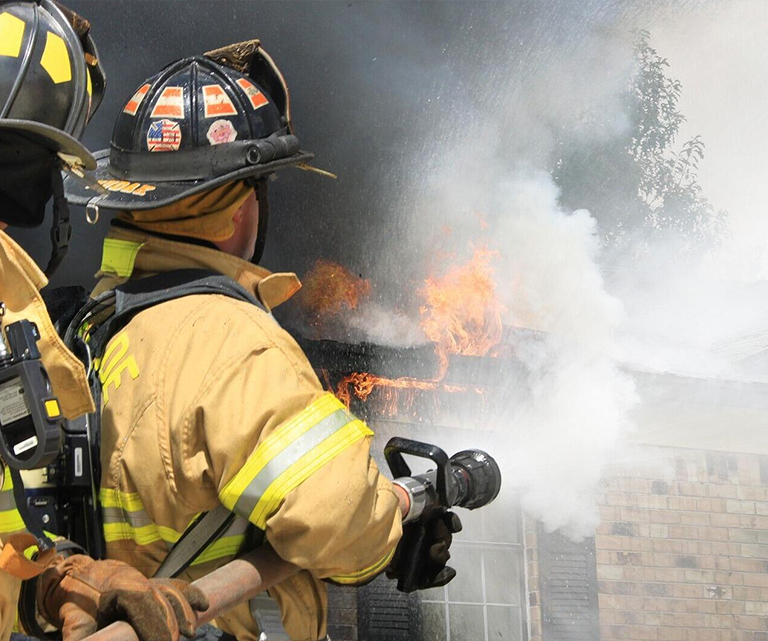Storz Couplings are quick-connect industrial couplings used in a wide range of application...

Forestry Fire Protection

Agricultural Fire Protection

Industrial Fire Protection

Municipal Fire Protection
Camlock Couplings feature a simple push-lock mechanism for easy operation and quick installation and removal without tools. Camlock fittings are available in a variety of materials (stainless steel, aluminum, polypropylene) and sizes for flexible use with different media such as liquids, gases and dry bulk. They are durable, user-friendly and highly safe. Suitable for oil and gas, chemical, agricultural and industrial applications, etc.
Product Features:
Excellent sealing performance, Not easy to fall off.
| Storz Couplings | |
| Commodity Description | |
| Size | 1-1/2", 2", 2-1/2", 4", 5" |
| Material | Aluminum or Brass |
| Feature | Light & Portable, simple Operation, Convenient |
1. Understanding EPDM Lining Properties The EPDM rubber lining provides intrinsic resistance to heat, weather, and many chemicals. Its polymer structure determines susceptibility to: Acidic and alkaline solutions Petroleum products such as...
READ MOREI. The Structural Mandate of Fire Hoses The performance of an EPDM Fire Hose relies critically on the structural integrity of its two main components: the inner EPDM rubber liner (providing a smooth waterway and chemical resistance) and the...
READ MOREThe modern **EPDM Fire Hose** is an engineering marvel, designed to handle both the intense thermal stresses of fire suppression and the mechanical demands of deployment in extreme climates. EPDM (Ethylene Propylene Diene Monomer) rubber is...
READ MORE(I) Mechanical design basis for convenience of operation
The reason why the push-lock mechanism of the camlock coupling can achieve easy operation and can be quickly installed and disassembled without tools is the ingenious mechanical design. From a structural point of view, the push-lock mechanism is usually composed of key components such as cams, locking arms, and sealing rings. When performing the connection operation, the user only needs to align the two parts to be connected, and then gently push to make the locking arm of the cam lock joint contact with the corresponding slot. At this time, the special shape of the cam comes into play, and the cam begins to rotate under the action of the thrust. The rotation process of the cam is based on the principle of leverage, and a large torque can be generated through a small external force, so that the locking arm can be quickly and easily inserted into the slot.
This design greatly reduces the difficulty of operation, and even in an emergency, the operator can quickly complete the connection action. For example, in fire rescue scenarios, time is life, and firefighters need to quickly connect equipment such as water hoses. The convenient operation characteristics of the camlock coupling can give full play to their advantages. The firefighting equipment produced by Taizhou Jun'an Fire Technology Co., Ltd. focuses on the practicality and convenience of the products. This design feature of the camlock coupling is also in line with its pursuit of product performance.
(II) Mechanical guarantee of anti-falling safety
While ensuring convenient operation, the mechanical design of the push lock mechanism also fully considers anti-falling safety. When the cam is rotated into place, the lock arm will be tightly stuck in the card slot to form a stable mechanical structure. At this time, if the external force wants to separate the connected parts, it needs to overcome the friction between the cam and the card slot and the elastic deformation force of the lock arm itself.
From the analysis of mechanical principles, the shape and size of the cam are precisely designed so that during normal use, the contact area and pressure distribution between the cam and the card slot are reasonable, and sufficient friction can be generated to resist external tension and impact. The lock arm is usually made of a material with a certain elasticity. After being stuck in the card slot, it will undergo elastic deformation, further increasing the tightness of the connection.
Take the fire hose with camlock coupling produced by Taizhou Jun'an Fire Technology Co., Ltd. as an example. In firefighting operations, the hose needs to withstand greater water pressure and water flow impact. The anti-drop design of the camlock coupling can ensure that the hose will not fall off easily under high pressure, ensuring the smooth progress of firefighting operations. Through the optimization design of the cam angle, lock arm material and structure, a good balance between operational convenience and anti-drop safety is achieved.
(III) Key factors for balancing operational convenience and anti-drop safety
In order to achieve a balance between operational convenience and anti-drop safety, the mechanical design of the push-lock mechanism needs to consider multiple key factors. The first is the profile curve design of the cam. Different profile curves will affect the external force required when the cam rotates and the movement trajectory of the lock arm. After a large number of experiments and simulation analysis, a cam profile curve that can ensure easy operation and reliable locking is designed.
The second is the choice of materials. The materials of components such as the lock arm and cam must not only have good mechanical properties, such as strength, toughness and wear resistance, but also consider their weight and cost. For example, the camlock coupling made of high-strength aluminum alloy can not only ensure sufficient strength and safety, but also reduce the overall weight and facilitate operation. Taizhou Jun'an Fire Technology Co., Ltd. also pays attention to the selection of materials and quality control when producing fire-fighting equipment to ensure the performance and quality of the products.
In addition, the matching accuracy between components is also key. Precise processing and assembly can ensure the smooth movement between the various components of the cam lock joint during use, while improving the reliability of the connection. By reasonably adjusting the dimensional tolerance and matching clearance of the components, the push-lock mechanism can meet the convenience of operation while having good anti-falling safety.
(I) Visual and tactile feedback design
In order to prevent the cam lock joint from being misoperated due to incomplete locking, visual and tactile feedback mechanisms are usually designed. From the perspective of visual feedback, obvious markings are set at key parts of the camlock coupling, such as near the locking arm and the slot. When the locking arm is fully inserted into the slot, the marking will present a specific state, such as color change or pattern alignment. The operator can visually judge whether the connector is fully locked by observing these marks.
In terms of tactile feedback, during the push-lock process, when the cam approaches the fully locked position, the operator will feel a change in the operating resistance. This change in resistance is achieved through the structural design of the cam and the locking arm, so that when it is about to be fully locked, there will be an obvious "stuck" feeling, reminding the operator that the connector is about to be locked. This visual and tactile feedback mechanism is like a double reminder to the operator, greatly reducing the risk of misoperation due to incomplete locking. In product design, the user experience is emphasized, and this feedback design to prevent misoperation is in line with its pursuit of product humanization.
(II) Mechanical structure redundancy design
In addition to visual and tactile feedback, the camlock connector also has a redundant design in the mechanical structure. A common design is to use multiple locking lines. For example, after the locking arm is inserted into the slot, there will be a secondary locking device. This secondary locking device can be a small spring clip. When the locking arm is in place, the spring clip will automatically pop up to further fix the position of the locking arm to prevent it from accidentally loosening.
Another mechanical structure redundancy design is to increase the number of locking arms. By setting up multiple locking arms, even if one of the locking arms fails or is not fully locked, the other locking arms can still ensure the reliability of the connection. This multi-locking arm design increases the fault tolerance of the system and improves the overall safety. When producing fire-fighting equipment, we pay attention to the reliability and safety of the products. This mechanical structure redundancy design concept is consistent with the company's product quality requirements.
(III) Intelligent monitoring and alarm design
With the continuous development of science and technology, some advanced camlock couplings have also introduced intelligent monitoring and alarm designs. By installing sensors inside the joints, the locking status of the joints is monitored in real time. When the sensor detects that the joint is not fully locked or shows signs of loosening, an alarm signal will be issued immediately. The alarm signal can be a sound alarm, flashing lights, or the signal can be transmitted to the monitoring center through wireless communication technology, which is convenient for remote monitoring and management.
This intelligent monitoring and alarm design provides a higher level of protection for the safe use of camlock couplings. For some application scenarios with extremely high safety requirements, such as the petrochemical industry, the intelligent monitoring and alarm system can detect potential safety hazards in a timely manner and avoid accidents. In the process of continuously improving product performance, we actively pay attention to the application of new technologies. Intelligent monitoring and alarm design is expected to be further promoted and applied in future products.